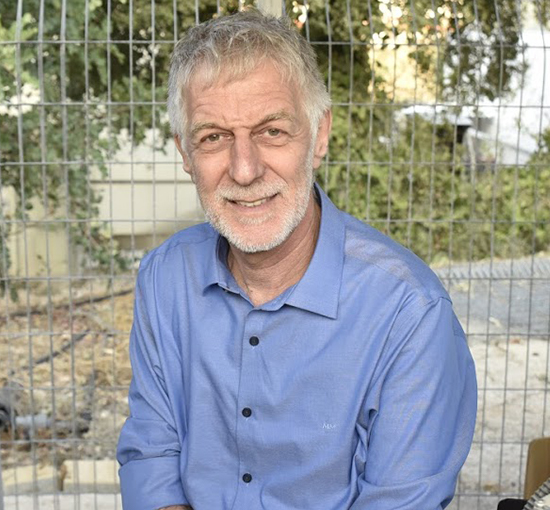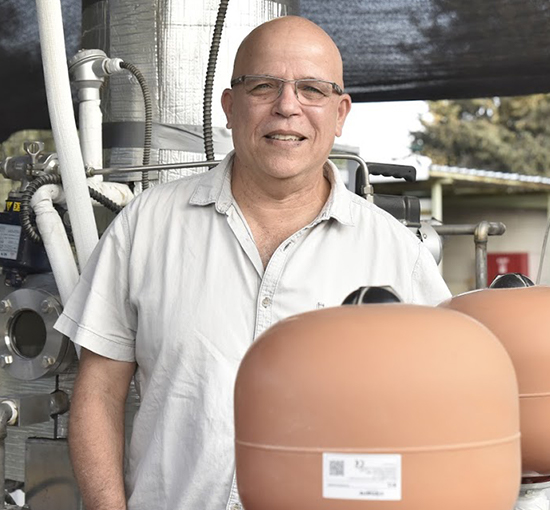Solving the World’s Water Crisis

Technion Impact / Innovations for a Greener World
Water is an essential. But accessing reliable, clean water is becoming more and more difficult in parts of the world. Already, 2.1 billion people worldwide don’t have access to water, and 4.5 billion lack adequate sanitation.
This problem will only grow in the coming years. According to the World Health Organization, by 2025 about half of the world’s population will live in areas facing water scarcity.
Water from Air
Technion experts are working to rapidly solve the world’s clean water crisis, finding innovative ways to bring water to those who don’t have it, and to purify water to ensure water supplies are free from contaminants.
Prof. Friedler and Associate Professor David Broday, also of the Faculty of Civil and Environmental Engineering, have developed a model for a system that separates the moisture naturally present in the air around us and converts it into drinking water. Their work has already drawn the attention of T3, the Technion Technology Transfer, which facilitates the transformation of ideas into real-life, applied solutions for the commercial sector.
There is humidity in the air all around us — even in the arid air of the Sahara Desert. This means that even the smallest, poorest, most isolated communities have access to clean drinking water. They simply need the tools to collect it.
Systems for harvesting moisture from the air already exist. They are similar to domestic air conditioners that pull in air, cool it, and push out the cool air, discarding the moisture condensed during the cooling process. Moisture harvesting systems keep the condensed moisture and discard the cooled air instead.
However, this system is extremelyinefficient and expensive. Profs. Broday and Friedler’s prototyped system optimizes the process by separating moisture from the air before cooling it. This means energy is used only to cool the moisture itself and convert it into available water.
The new system also makes the water cleaner. Air can contain pollutants, dust, and disease-causing bacteria, making the resulting water pulled from that air polluted and contaminated, too.
In the Technion researchers’ system, only the condensed water meets the cooling coils. Any contaminants from the air are absorbed into a saline-based desiccant, ensuring the water that is produced is pure and safe to drink right away.
Profs. Broday and Friedler have built a prototype and are already performing simulations to see how the system would function in different climatic and humidity conditions.
“We wanted to see whether the system can be used in areas where the air is arid,” said Prof. Broday. “For example, in the Sahara Desert and in Yemen, which is currently
experiencing a severe hunger crisis and lack of drinking water.” The system is particularly useful for small and isolated communities that are located far from water sources, as it can produce water where it is most needed.
Combating Oil Pollution
Oil is one of the world’s most common pollutants, and can be found in almost every ecosystem. Oil makes it more difficult for soil to absorb water, and oil-contaminated water and soil can cause a variety of health problems in humans, from skin irritations to liver and kidney damage. Yet removing oil pollution is expensive, harmful to the environment, and often ineffective.
Visiting Professor Shai Kendler of the Faculty of Civil and Environmental Engineering has found an alternative using remote sensing technology.
When solar radiation hits physical objects on Earth, the objects absorb and reflect different amounts of solar radiation back. Satellite sensors can detect how much radiation is reflected back from those objects, creating a unique “fingerprint” for each object based on the wavelength and frequency of solar radiation that is reflected. Through this process, a satellite can distinguish between soil, water, and pollutants.
“Rocks and soil, for example, are objects which have a color that is strong and distinct,” Prof. Kendler explained. “In contrast, pollutants are often shown as thin and permeable layers.”
Prof. Kendler has developed an algorithm that can quickly identify the type of pollutant present in soil or vegetation, turning a mountain of data available from satellite imagery into a map of areas impacted by oil pollution. The algorithm can detect and specify the chemical properties of a pollutant as well as where the pollutant is located down to the pixel, allowing experts on the ground to know exactly where pollutants are hiding.
Prof. Kendler’s algorithm has other potential applications as well, including identifying anthrax inside paper envelopes.
Keeping Our Water Clean
Assistant Professor Adi Radian of the Faculty of Civil and Environmental Engineering has developed an innovative, patented technology to purify water from the pollutant formaldehyde. Formaldehyde is a carcinogen that is used to manufacture glue and therefore common in the wood, paper, and textile industries, where it accumulates in the water used for production.
The challenge with removing formaldehyde from our water is that it is present in such low concentrations that typical methods for removing contaminants from water are ineffective. This, coupled with the deadly side effects of formaldehyde, make it one of the most problematic pollutants in our environment.
Prof. Radian’s team has adapted montmorillonite clay to enable it to absorb formaldehyde and reduce its concentration. They then attach bacteria that breaks down formaldehyde to the clay. After each cycle of formaldehyde decomposition, the clay cleans itself for another round. Prof. Radian believes the adapted clay may be able to absorb and degrade other pesticides that threaten to contaminate groundwater, too.
These Technion innovations go a long way toward making sure there is clean water for all.





